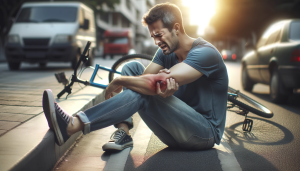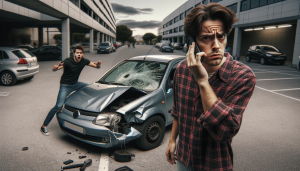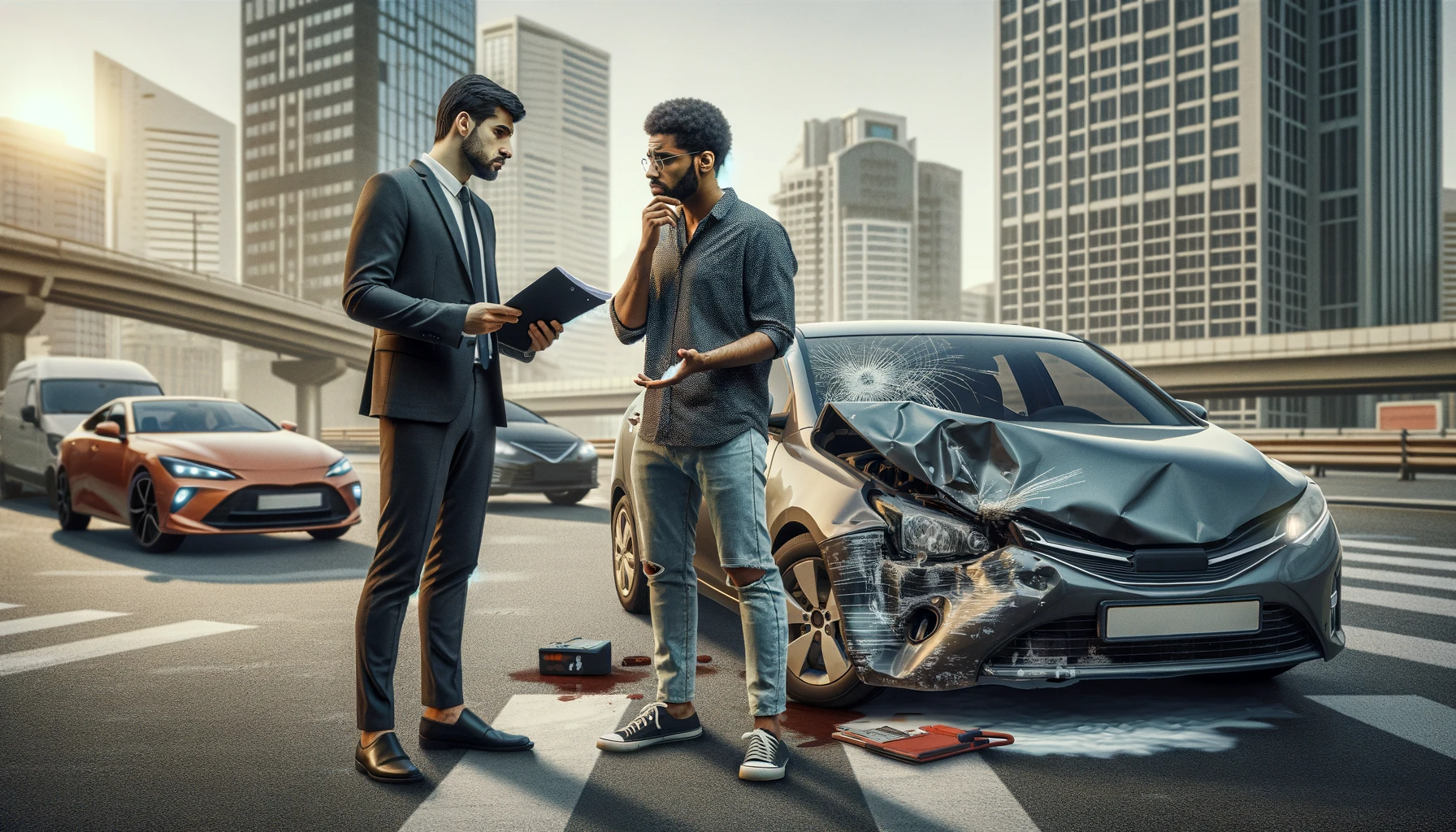Introduction
In today’s rapidly evolving urban landscape, the number of pedestrians, cyclists, and vehicles sharing the roadways has significantly increased. As cities grow denser and more people turn to walking or cycling for their health, cost savings, or environmental reasons, the interaction between these groups and motor vehicles has become more complex. Despite the rise in awareness around pedestrian and cyclist rights, many people remain unaware of the specific legal protections available to them. Unfortunately, it often takes an
accident to highlight the importance of understanding these rights. For pedestrians and cyclists, knowing their rights and protections in the event of an
accident can be essential in ensuring they receive the proper care, compensation, and justice they deserve.
Understanding Your Basic Rights
Pedestrians and cyclists have rights that extend beyond mere accommodation on the roads; they are considered vulnerable road users and are afforded special legal protections in many jurisdictions. These protections are in place because, unlike motor vehicle occupants, pedestrians and cyclists lack the physical barriers and safety features—such as airbags and seatbelts—that reduce
injury in an accident. Laws protect their right to safely use shared spaces such as crosswalks, bike lanes, and sidewalks. For instance, pedestrians generally have the right of way at marked crosswalks, while cyclists are often recognized as having similar rights and responsibilities to motor vehicles. By granting these rights, laws seek to reduce the risk of harm and to ensure a balanced use of public roads.
Legal Protections for Pedestrians in Accidents
Pedestrians have a host of legal protections designed to protect their safety. In most regions, pedestrians are prioritized at marked crosswalks, where drivers are legally required to yield. Some jurisdictions extend these protections even further by granting pedestrians the right of way at unmarked crosswalks at intersections. Additionally, laws mandate that drivers exercise caution in areas with high pedestrian traffic, such as schools, parks, and residential zones, where speed limits may be lower. If a vehicle fails to yield to a pedestrian in a designated crosswalk, the driver is often considered at fault and may be held liable for any injuries or damages. These laws reflect a broader societal goal to protect pedestrians and promote safer shared spaces.
Legal Protections for Cyclists in Accidents
Cyclists, like pedestrians, have specific legal rights on the road, and they are subject to certain responsibilities. Laws generally require cyclists to follow the same traffic regulations as vehicles, including obeying signals, following speed limits, and using proper hand signals when turning or changing lanes. In exchange, drivers are expected to give cyclists ample room to navigate safely. For example, in many areas, a safe passing distance of three feet or more is required when a vehicle overtakes a cyclist. When a driver violates these protections—for instance, by speeding, making an illegal turn, or driving while distracted—and a collision occurs, the cyclist can often pursue a claim for damages. Laws aim to create a fair, shared-road environment and protect cyclists from preventable
accidents.

Who is Liable in Pedestrian and Cyclist Accidents?
Determining liability in pedestrian and cyclist accidents can vary significantly depending on the context. If a driver clearly violated a traffic law—such as running a red light or failing to yield at a crosswalk—they are generally held liable. However, some accidents may involve shared responsibility. For example, if a cyclist unexpectedly swerves into traffic or a pedestrian crosses against a signal, both parties may share some fault. In such cases, comparative negligence laws may apply, allowing liability to be assigned proportionately based on each party’s role in the incident. Understanding who acted in accordance with traffic laws and who may have acted recklessly is central to determining liability and securing fair compensation.
Steps to Take After an Accident as a Pedestrian
If you’re involved in an accident as a pedestrian, your actions immediately afterward can have a significant impact on your health, safety, and any potential legal claim. Here are important steps to follow:
- Seek Immediate Medical Attention: Your health is the priority. Injuries may not always be apparent immediately due to shock or adrenaline. Even minor symptoms should prompt a medical evaluation, as they may indicate more severe underlying injuries.
- Report the Accident to Law Enforcement: Having an official report on file is essential, as it documents the incident and can be valuable for insurance claims or legal actions. Ensure that law enforcement accurately records details from all parties involved.
- Gather Evidence from the Scene: If you’re able, document the accident scene by taking photographs of the area, any visible injuries, and any damage to personal belongings. Additionally, collect contact information from witnesses, as their statements can substantiate your account of the event.
- Maintain Detailed Records: Preserve all medical records, receipts, and bills related to the accident. Keep a journal of any physical, emotional, or psychological effects you experience as a result of the incident, as these records can help support future claims for compensation.
Steps to Take After an Accident as a Cyclist
The actions cyclists take following an
accident are also vital to ensure their safety and protect their rights. Here are recommended steps for cyclists involved in an
accident:
- Prioritize Safety and Seek Medical Help: Move to a safe location, if possible, to avoid further harm from traffic. Even if injuries seem minor, seek medical attention to ensure there are no serious underlying issues.
- Document the Scene and Report to Law Enforcement: Like pedestrians, cyclists should ensure that law enforcement is contacted to create an official report. It’s also essential to document the accident scene thoroughly, noting any road hazards, damage to the bicycle, and the positions of vehicles.
- Collect Contact Information and Witness Statements: If there are witnesses, ask for their contact information and request statements if they’re willing. Their perspective can be crucial for insurance or legal claims.
- Keep All Related Records: Save all medical documentation, repair receipts, and a written record of the accident and its impact on your life. These records help ensure you’re compensated for any damages, injuries, or psychological distress.
Steps to Take After an Accident as a Cyclist
In the wake of an accident, cyclists, much like pedestrians, must act swiftly and carefully to protect their rights and secure necessary evidence for any potential claims. Whether the
accident involves a motor vehicle, another cyclist, or even a pedestrian, taking the right steps can greatly impact the outcome. Here’s a comprehensive checklist to follow:
- Get Medical Help: Even if injuries seem minor, prioritize visiting a healthcare provider as soon as possible. Accidents can cause hidden injuries, like concussions or internal damage, that may not be immediately apparent. Seeking medical attention not only ensures your safety but also creates a medical record that may be useful in claims or legal actions.
- File a Police Report: Contact law enforcement to file an official report, especially if the accident involves significant property damage, injuries, or potential legal repercussions. A police report can serve as critical evidence in determining fault and liability and can be particularly helpful if the other party later disputes the events of the accident.
- Collect Evidence: Document the scene to the best of your ability. Use your phone to take photos of the accident site, damaged property (such as your bicycle or helmet), any visible injuries, road conditions, and relevant traffic signs or signals. If there are witnesses, request their contact information and ask for statements. Detailed evidence is essential in demonstrating the circumstances of the accident and supporting any claims for compensation.
- Record Expenses: Keep track of all expenses related to the accident, including medical bills, physical therapy costs, prescription expenses, transportation costs to and from healthcare providers, and bike repair or replacement costs. This documentation is critical for calculating the full extent of damages in an insurance claim or legal case.
Insurance Claims for Pedestrians and Cyclists
Filing an insurance claim after an
accident can be a complex process, particularly for pedestrians and cyclists. Generally, the driver’s insurance policy will be the primary source of compensation if the driver is at fault. Here are some tips for a smooth claims process:
- Contact the Driver’s Insurance Company: Report the accident to the driver’s insurance company as soon as possible. Provide a factual account of what happened and be clear, concise, and consistent in your description. Remember, insurance adjusters may try to minimize the claim payout, so maintaining accuracy is essential.
- Submit Documentation and Evidence: Provide supporting documentation, including the police report, medical records, repair bills, and any witness statements or photos. This evidence can reinforce your claim and help validate the extent of your injuries and damages.
- Stay Persistent and Cautious: Be prepared for the insurer to potentially challenge your claim or offer a low settlement. Do not accept a settlement until you are sure it covers your full expenses. If necessary, seek legal assistance to ensure you receive a fair compensation amount.
Compensation for Injuries and Damages
As a pedestrian or cyclist involved in an accident, you may be eligible for various types of compensation, depending on the severity of the injuries and the circumstances surrounding the accident. Common types of compensation include:
- Medical Expenses: This encompasses hospital visits, surgeries, rehabilitation, and any necessary medical devices or medication. Even long-term or chronic conditions resulting from the accident, like physical therapy or pain management treatments, may be covered.
- Lost Wages: If you’re unable to work due to injuries sustained in the accident, you may be entitled to compensation for lost wages, including future income if the injuries affect your long-term ability to work.
- Pain and Suffering: Compensation for pain and suffering addresses the physical pain, emotional distress, and mental anguish caused by the accident. This type of compensation considers the accident’s impact on your quality of life and any lingering psychological effects.
- Property Damage: This includes repairing or replacing any damaged property, such as your bicycle, helmet, or personal belongings that were damaged in the accident.
The Role of Comparative Negligence
In some accidents, both the pedestrian or cyclist and the driver may share responsibility. This shared fault is where
comparative negligence laws come into play. For example, if a cyclist was texting or listening to music with both ears covered and a driver failed to yield, each party could be held partially responsible. Under comparative negligence, the percentage of fault assigned to each party affects the compensation. For instance, if a cyclist is found 20% at fault and the driver 80% at fault, the cyclist’s compensation may be reduced by 20%. Understanding this concept is essential, as it influences the final compensation amount and emphasizes the importance of both parties acting responsibly.

Legal Recourse for Severe Injury Cases
When
accidents result in severe injuries, such as traumatic brain injuries, spinal cord damage, or permanent disabilities, a legal claim may be necessary to cover the substantial medical and financial costs involved. In such cases, consulting a
personal injury attorney can be crucial. Attorneys who specialize in pedestrian and cyclist accidents can help:
- Investigate the Accident Thoroughly: Attorneys often work with investigators and accident reconstruction experts to gather crucial evidence and determine fault.
- Negotiate Fair Settlements: Lawyers can handle negotiations with insurance companies, ensuring that victims receive compensation that reflects the full scope of their injuries and future needs.
- Represent You in Court: If a fair settlement can’t be reached, an attorney can file a lawsuit and represent you in court to pursue just compensation.
Importance of Legal Assistance for Accident Victims
Navigating insurance claims, collecting evidence, and dealing with potential defenses from drivers can be overwhelming, especially when recovering from an
injury. Having a
personal injury lawyer can be invaluable in ensuring that your rights are protected throughout the process. An experienced attorney can:
- Guide You Through Each Step: From filing claims to negotiating settlements, a lawyer can simplify the process and provide expert advice.
- Negotiate with Insurers on Your Behalf: Insurance companies may attempt to reduce payouts, but an attorney’s experience can help secure a fair settlement.
- Represent You in Court, If Necessary: If the case escalates to a lawsuit, legal representation is critical to achieve a favorable outcome.
Common Defenses Used by Drivers
In an effort to avoid liability, drivers may use certain defenses against pedestrian and cyclist claims. Being aware of these potential defenses can help you and your attorney counter them effectively:
- Claiming Reckless Behavior: A driver may argue that a cyclist or pedestrian acted recklessly. For example, they might claim that a cyclist was weaving in and out of lanes or that a pedestrian crossed outside a designated crosswalk.
- Violating Traffic Laws: Drivers may assert that the pedestrian or cyclist failed to follow traffic laws. For instance, a driver might argue that a cyclist was riding against traffic or that a pedestrian crossed against a traffic signal.
Understanding these potential defenses can help you gather the necessary evidence to counter such claims and support your case.
Safety Tips for Pedestrians and Cyclists to Prevent Accidents
While it’s crucial to know what to do after an accident, prevention is equally important. By taking proactive measures, pedestrians and cyclists can reduce the risk of accidents. Here are some practical tips:
- Stay Visible: Wear bright or reflective clothing, especially at night or in low-light conditions. Cyclists should use lights on both the front and rear of their bicycles.
- Follow Traffic Laws: Obey all traffic signals, signs, and road markings. Cyclists should ride in designated bike lanes when available and avoid sudden lane changes.
- Be Predictable: Signal your intentions clearly, whether you’re turning, stopping, or crossing the street. Sudden, unexpected movements can make it difficult for drivers to react in time.
- Stay Alert: Avoid distractions, such as using phones or listening to music with both ears covered. Staying attentive allows you to respond quickly to potential hazards.
Conclusion
Being knowledgeable about your rights and responsibilities as a pedestrian or cyclist is crucial, especially in today’s crowded and fast-paced traffic environment. By understanding the necessary steps to take after an
accident, as well as the legal and financial avenues available to you, you’re better equipped to handle the aftermath of an incident confidently. Moreover, prioritizing safety and adhering to traffic laws can significantly reduce your risk of being involved in an accident. Whether it’s navigating insurance claims, countering potential defenses, or taking preventive measures, being informed empowers you to protect your rights, well-being, and safety on the road.
Look for an attorney who has the right legal resources for your legal needs.
Contact us here on the
Warmuth Law website or through our hotline 888-517-9888.
Frequently Asked Questions (FAQ's)
1. What should I do immediately after being hit by a car?
Seek medical attention, report the accident, and gather evidence if possible. Document everything for insurance claims or legal proceedings.
2. Can I sue the driver if I'm partially at fault?
Yes, depending on the state’s comparative negligence laws, you may still recover some compensation, even if partially at fault.
3. How long do I have to file a claim?
Typically, you have two years, but this varies by state. Check your local statutes or consult an attorney.
4. What if the driver doesn’t have insurance?
You may file a claim through your own insurance or explore other legal options for compensation.
5. Do I need a lawyer for minor injuries?
While not always necessary, a lawyer can ensure your rights are protected, especially if there are complications in your claim.













